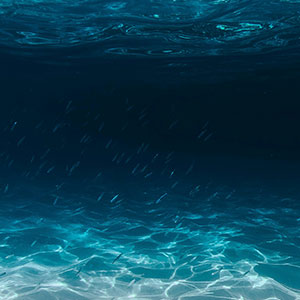
Join the Fun!
Join 1.2 million Panda readers who get the best art, memes, and fun stories every week!
Thank you!
You're on the list! Expect to receive your first email very soon!

Ken P
Community Member

This lazy panda forgot to write something about itself.



weirdest-scientific-facts
When the Milky Way and Andromeda galaxies collide, the solar system will likely remain unaffected due to the extreme distances between stars.
It'll be one hell of a view at night though.

weirdest-scientific-facts
That 20–25% of people in comas are awake and aware but just can’t move.
Imagine just lying there, trapped in the prison of your own mind. I’d rather not.

weirdest-scientific-facts
COVID has about a 1% mortality rate.
Bubonic plague has a 15% mortality rate, even with modern antibiotics (and the pneumonic version is 100% fatal, even with modern medicine).
Given the number of people in the US who refused to wear masks, who refused to take basic safety precautions, and who denied basic science…an outbreak of plague would k*ll 40 million people here, easily.

weirdest-scientific-facts
Science doesn't scare me. It is the social problems caused by those who deny the oneness of the human family that scare me.
For thousands of years we have been warring tribes arguing over pieces of dirt, each tribe thinking they should be more privileged than the next.
It is time for the human family to unite and celebrate it's diversity. Those who denigrate the cultures of others scare me.

weirdest-scientific-facts
Yet one more thing to worry about due to global warming: The defrosting, reviving, and unleashing of viruses trapped in the permafrost when the ice melts and the ground thaws. What this will do to world health is currently unknown, but it won’t be pretty. It will make COVID look like the 24-hour croup.

weirdest-scientific-facts
Crocodiles can climb trees. While they might not look like a climber, they certainly can climb trees.
In a study conducted by the University of Tennesse, it was confirmed that four different crocodile species, found in Australia, Africa, and the Americas, are all able to climb, some as high as 4m, where they were observed basking in trees. They mostly do this to bask in the sun, or to survey territory for predators, prey, or for other competitor crocodiles.
Imagine that you’ve got a crocodile chasing you and you climb a tree to escape from it. When you reach above, you find one already waiting for you there. He’ll say to you:
Dread it. Run from it. Destiny still arrives.
Or imagine that you decided to get some rest under a tree and one of them decides to jump on you from above screaming:
Surprise, motherf**ker!

weirdest-scientific-facts
A gamma ray burst (GRB) could wipe all life from the face of the Earth at any time with little to no warning.
GRBs are intense blasts of radiation that stream into space when a star explodes, traveling at 99.99% the speed of light. GRBs are well known to astronomers and have been spotted in different galaxies.
If you're on the side of the planet facing the GRB, it would be like getting caught in a nuclear blast thousands of times stronger than all the nuclear warheads on Earth combined. If you happen to be on the other side of the planet, you'll simply burn to death from radiation as the atmosphere disintegrates and all the gamma-rays liquefy your cells. A near miss GRB, which means the stream of radiation just grazes the Earth, will still be fatal, but the resulting death will be slower as the ozone layer burns up and our ecosystem is destroyed.
It has been calculated that every 5 million years or so, a gamma ray burst goes off close enough to harm life on Earth. GRBs may have caused some of the extinction events that have occurred in the Earth’s past. GRB’s have possibly sterilized the planet before and they could do it again.

dawrina reply
Deep Sea Giantism.
There are species that live deep underwater that are massive compared to their shallow water counterparts.
The only way we've come across them is when they've washed up on shore or were caught by fisherman because they wandered into more shallow water.
But we really have no idea what the scope or scale of how large these creatures can get because we can't study them at the depth in which they live. For all we know, the found creatures were babies that were separated from their mothers.

3nd0rph1n reply
Spherically, the earth is about as smooth as a billiard ball. Even with Everest and the deepest parts of the oceans, they barely even register on the grand scene.

anon reply
It seems like most things in here about space but really the depth and amount unknown about the ocean is insane. The Mariana Trench is 6 miles deep.

Smil3yAngel reply
I know I'm late to this but what really freaks me out about space is that so much of what we see is from millions of years ago. If we can only see what that star looked like millions of years ago, what does it actually look like today?

Aiged reply
It's been suggested that the reason we have no evidence of intelligence beyond our planet is not the vast distances, but the brief blip of time intelligence exists before destroying itself isn't long enough for two distinct space-faring cultures to interact.

deadBoybic reply
I always thought it was cool that, throughout all human history, there are still parts of the world where no one has stepped foot.
Take a hiking trail for instance. If I walk even thirty feet off the trail, I could potentially be standing somewhere no one else has stood before. I could have been the first person to walk in that area.
I don’t have any evidence that this is the case but idk I had the thought one day so I figured I’d put that out there lol.

SavageCabbageGG reply
Eventually (due to the expansion of the universe) nothing will be visible outside our galaxy
This will take a *very* long time tho.

anon reply
There is a squid called the bigfin squid that we’ve only seen 3 times. Their tentacles are so long they reach to the seafloor. About 20-26ft long and scientists say the ones we’ve seen are more than likely not adults. They even have elbows. We don’t really know much about them since they are rarely seen. Look on google and you’ll see how scary they are. And yes they are in the deep, deep ocean approx 5000ft deep.

MegaGrimer reply
In our galaxy, a star goes supernova roughly once every 50 years. That seems to be the universal average rate of galaxies having stars going supernova. There are so many galaxies in the known universe that there are roughly 50 stars turning into supernovas every second.

myhamsterisajerk reply
Super flares happen on every star. Which includes our own sun, but since the sun is a rather old and quiet star, it only happens every other 1000 years or so. But they happen, and it's not a matter if, but when it happens.
A superflare from the sun wouldn't be that deadly and devastating as it sounds, but it would be enough to roast sattelite communication, cause global blackouts and a thick layer of radiation around earth.
Scientists guess the next super flare will occur within the next 100 years.
Anyway, have a nice day.

ay-aye-ron reply
There's millions of black holes that are millions of times bigger than the earth that are just randomly hurdling through space at insane speeds like pinballs in a pinball machine, sleep tight!

Benob2007 reply
*there are no baby butterflies*. Think about it, they’re caterpillars, then they’re butterflies so there’s no such thing as a baby butterfly... idk why, that just disturbs me a little.

doublestitch reply
The exact middle of nowhere is 48°52.6′S 123°23.6′W. It's a spot in the Pacific Ocean named [Point Nemo](https://oceanservice.noaa.gov/facts/nemo.html) that's 2688 km (1451 nautical miles) from nearest land.
It's roughly between New Zealand and South America. More specifically Point Nemo is between the Easter Islands, the Pitcairn Islands, and Antarctica.
Suppose you were in a ship that sank at Point Nemo and you had to climb into a life raft. If you were on your own without a radio, just paddling and collecting rainwater and catching fish, then if you could travel 20 miles a day it would take two and a half months to reach nearest land...
...if you navigated perfectly.

IntelligentBuffalo79 reply
The distance between the deepest part of the ocean and the top of Mount Everest is only about 12 miles (~20 Km).

anon reply
The further away a galaxy is, the smaller it looks to us. That makes sense. However there comes a point beyond which the further away it is the LARGER it looks. That's because when the light left it, the universe was smaller, the galaxy was closer, so it filled a larger area of sky.
Source: The End of Everything: (Astrophysically Speaking) by Katie Mack.








SavageCabbageGG reply
Eventually (due to the expansion of the universe) nothing will be visible outside our galaxy
This will take a *very* long time tho.

MegaGrimer reply
In our galaxy, a star goes supernova roughly once every 50 years. That seems to be the universal average rate of galaxies having stars going supernova. There are so many galaxies in the known universe that there are roughly 50 stars turning into supernovas every second.

3nd0rph1n reply
Spherically, the earth is about as smooth as a billiard ball. Even with Everest and the deepest parts of the oceans, they barely even register on the grand scene.

Smil3yAngel reply
I know I'm late to this but what really freaks me out about space is that so much of what we see is from millions of years ago. If we can only see what that star looked like millions of years ago, what does it actually look like today?

deadBoybic reply
I always thought it was cool that, throughout all human history, there are still parts of the world where no one has stepped foot.
Take a hiking trail for instance. If I walk even thirty feet off the trail, I could potentially be standing somewhere no one else has stood before. I could have been the first person to walk in that area.
I don’t have any evidence that this is the case but idk I had the thought one day so I figured I’d put that out there lol.

anon reply
It seems like most things in here about space but really the depth and amount unknown about the ocean is insane. The Mariana Trench is 6 miles deep.

weirdest-scientific-facts
When the Milky Way and Andromeda galaxies collide, the solar system will likely remain unaffected due to the extreme distances between stars.
It'll be one hell of a view at night though.

IntelligentBuffalo79 reply
The distance between the deepest part of the ocean and the top of Mount Everest is only about 12 miles (~20 Km).

weirdest-scientific-facts
A gamma ray burst (GRB) could wipe all life from the face of the Earth at any time with little to no warning.
GRBs are intense blasts of radiation that stream into space when a star explodes, traveling at 99.99% the speed of light. GRBs are well known to astronomers and have been spotted in different galaxies.
If you're on the side of the planet facing the GRB, it would be like getting caught in a nuclear blast thousands of times stronger than all the nuclear warheads on Earth combined. If you happen to be on the other side of the planet, you'll simply burn to death from radiation as the atmosphere disintegrates and all the gamma-rays liquefy your cells. A near miss GRB, which means the stream of radiation just grazes the Earth, will still be fatal, but the resulting death will be slower as the ozone layer burns up and our ecosystem is destroyed.
It has been calculated that every 5 million years or so, a gamma ray burst goes off close enough to harm life on Earth. GRBs may have caused some of the extinction events that have occurred in the Earth’s past. GRB’s have possibly sterilized the planet before and they could do it again.

Benob2007 reply
*there are no baby butterflies*. Think about it, they’re caterpillars, then they’re butterflies so there’s no such thing as a baby butterfly... idk why, that just disturbs me a little.

anon reply
The further away a galaxy is, the smaller it looks to us. That makes sense. However there comes a point beyond which the further away it is the LARGER it looks. That's because when the light left it, the universe was smaller, the galaxy was closer, so it filled a larger area of sky.
Source: The End of Everything: (Astrophysically Speaking) by Katie Mack.

weirdest-scientific-facts
Crocodiles can climb trees. While they might not look like a climber, they certainly can climb trees.
In a study conducted by the University of Tennesse, it was confirmed that four different crocodile species, found in Australia, Africa, and the Americas, are all able to climb, some as high as 4m, where they were observed basking in trees. They mostly do this to bask in the sun, or to survey territory for predators, prey, or for other competitor crocodiles.
Imagine that you’ve got a crocodile chasing you and you climb a tree to escape from it. When you reach above, you find one already waiting for you there. He’ll say to you:
Dread it. Run from it. Destiny still arrives.
Or imagine that you decided to get some rest under a tree and one of them decides to jump on you from above screaming:
Surprise, motherf**ker!

ay-aye-ron reply
There's millions of black holes that are millions of times bigger than the earth that are just randomly hurdling through space at insane speeds like pinballs in a pinball machine, sleep tight!

dawrina reply
Deep Sea Giantism.
There are species that live deep underwater that are massive compared to their shallow water counterparts.
The only way we've come across them is when they've washed up on shore or were caught by fisherman because they wandered into more shallow water.
But we really have no idea what the scope or scale of how large these creatures can get because we can't study them at the depth in which they live. For all we know, the found creatures were babies that were separated from their mothers.

doublestitch reply
The exact middle of nowhere is 48°52.6′S 123°23.6′W. It's a spot in the Pacific Ocean named [Point Nemo](https://oceanservice.noaa.gov/facts/nemo.html) that's 2688 km (1451 nautical miles) from nearest land.
It's roughly between New Zealand and South America. More specifically Point Nemo is between the Easter Islands, the Pitcairn Islands, and Antarctica.
Suppose you were in a ship that sank at Point Nemo and you had to climb into a life raft. If you were on your own without a radio, just paddling and collecting rainwater and catching fish, then if you could travel 20 miles a day it would take two and a half months to reach nearest land...
...if you navigated perfectly.

weirdest-scientific-facts
Yet one more thing to worry about due to global warming: The defrosting, reviving, and unleashing of viruses trapped in the permafrost when the ice melts and the ground thaws. What this will do to world health is currently unknown, but it won’t be pretty. It will make COVID look like the 24-hour croup.

 Dark Mode
Dark Mode 

 No fees, cancel anytime
No fees, cancel anytime 



























